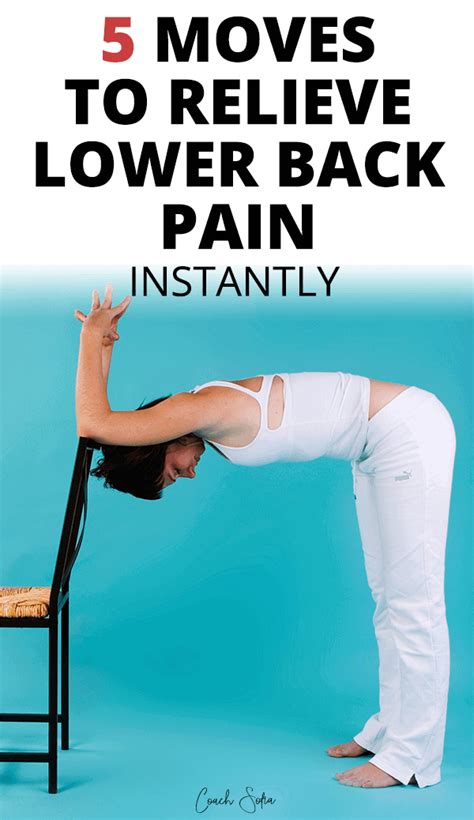How To Get Rid Of Back Pain Instantly: Quick Relief Strategies
Back pain is a common ailment, striking people of all ages and activity levels. While a doctor should always be consulted for persistent or severe pain, there are several things you can do to find instant relief from that nagging backache. This guide explores quick strategies to alleviate back pain, focusing on immediate relief techniques. Remember, these methods offer temporary relief and shouldn't replace professional medical advice.
Understanding Your Back Pain
Before diving into solutions, it's important to understand the potential causes of your back pain. Is it a sudden, sharp pain? A dull, aching sensation? Knowing the nature of your pain can help you determine the most effective immediate relief method. Common causes include muscle strains, sprains, poor posture, and even stress.
Instant Relief Strategies for Back Pain
Here are some methods you can try to find quick relief from back pain:
1. Ice and Heat Therapy:
This classic method often provides immediate comfort. Ice reduces inflammation by constricting blood vessels. Apply an ice pack wrapped in a thin towel for 15-20 minutes at a time, several times a day, especially right after an injury. Heat, on the other hand, increases blood flow, relaxing muscles and easing stiffness. Use a heating pad or warm compress for 15-20 minutes. Experiment to see which works best for you; some find alternating ice and heat most effective.
2. Over-the-Counter Pain Relief:
Nonsteroidal anti-inflammatory drugs (NSAIDs) like ibuprofen or naproxen can help reduce pain and inflammation. Always follow the dosage instructions on the packaging and consult a doctor or pharmacist if you have any concerns or underlying health conditions. Acetaminophen (paracetamol) can also provide pain relief, but it doesn't reduce inflammation.
3. Gentle Movement and Stretching:
While you might feel the urge to stay completely still, gentle movement can actually help alleviate back pain. Avoid strenuous activity, but try some gentle stretches like:
- Knee-to-chest stretch: Gently pull one knee towards your chest, holding for 20-30 seconds. Repeat with the other leg.
- Cat-cow stretch: Start on your hands and knees, alternating between arching and rounding your back.
- Pelvic tilts: Lie on your back with knees bent, gently tilting your pelvis back and forth.
These stretches can help loosen tight muscles and improve blood flow.
4. Change of Position:
Sometimes, simply changing your position can provide significant relief. If you've been sitting for a long time, stand up and move around. If you've been standing, sit down and rest. Try lying down on your back with your knees bent and a pillow under your knees for support.
5. Massage:
A gentle self-massage or a massage from a professional can help relax tense muscles and alleviate pain. Focus on the areas where you feel the most pain, using gentle, circular motions.
6. Proper Posture:
Maintaining good posture is crucial for preventing and managing back pain. Sit upright with your shoulders relaxed and your back supported. When standing, keep your shoulders back and your core engaged.
When to See a Doctor
While these strategies can offer immediate relief, it's important to seek professional medical attention if your back pain:
- Is severe or persistent: Pain that lasts longer than a few weeks warrants a doctor's visit.
- Is accompanied by other symptoms: Such as numbness, tingling, weakness, or fever.
- Is caused by a known injury: Like a fall or car accident.
- Doesn't improve with home treatment: If you've tried these methods and your pain persists, consult a healthcare professional.
This information is intended for general knowledge and informational purposes only, and does not constitute medical advice. It is essential to consult a qualified healthcare professional for any health concerns or before making any decisions related to your health or treatment.
